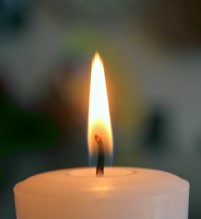To make an explosive, you need to mix something that will burn (called the fuel), such as charcoal or sulfur, with something that provides oxygen (called the oxidizer). The closer you can get the fuel to the oxidizer, the faster it will burn.
One of the first explosives to be invented was gunpowder. The fuel is charcoal and sulfur. The oxidizer is potassium nitrate, which is a chemical that has three oxygen atoms in it. When it gets hot, it releases the oxygen, so the charcoal and the sulfur can burn.

Potassium nitrate – the oxidizer in gunpowder
To make sure the oxidizer and the fuel are very close to each other, each of them are ground into a fine powder, and then the powder is carefully mixed together. The finer you grind the powders, the better the gunpowder will be.
To keep the powders from separating, they are mixed with a little water to make a paste, and then dried out again, and then the dried paste is ground up. This makes the gunpowder more reliable, and helps it all burn up at once.
Another way to make an explosion is to mix a fuel really well with air and then ignite it. Dust explosions happen when coal dust in a mine or flour dust in a mill are mixed into the air and then set off by a spark or a flame. Gas explosions happen in much the same way, when a flammable gas or vapor mixes very well with air and then gets ignited somehow.
Nitroglycerin and TNT are examples of what we call high explosives. In a high explosive, the fuel and oxidizer are packed into the same molecule. They are extremely close together. That makes nitroglycerin and TNT much more powerful than gunpowder.

Nitroglycerine – the explosive in dynamite
When a high explosive detonates, the molecule comes apart, and the atoms rearrange themselves. The oxygen combines with the fuel very quickly, and you get a big bang.
Not all explosives use oxygen as the oxidizer. Other elements can act like oxygen to burn fuels. Chlorine, fluorine, iodine, and bromine are all good oxidizers.
